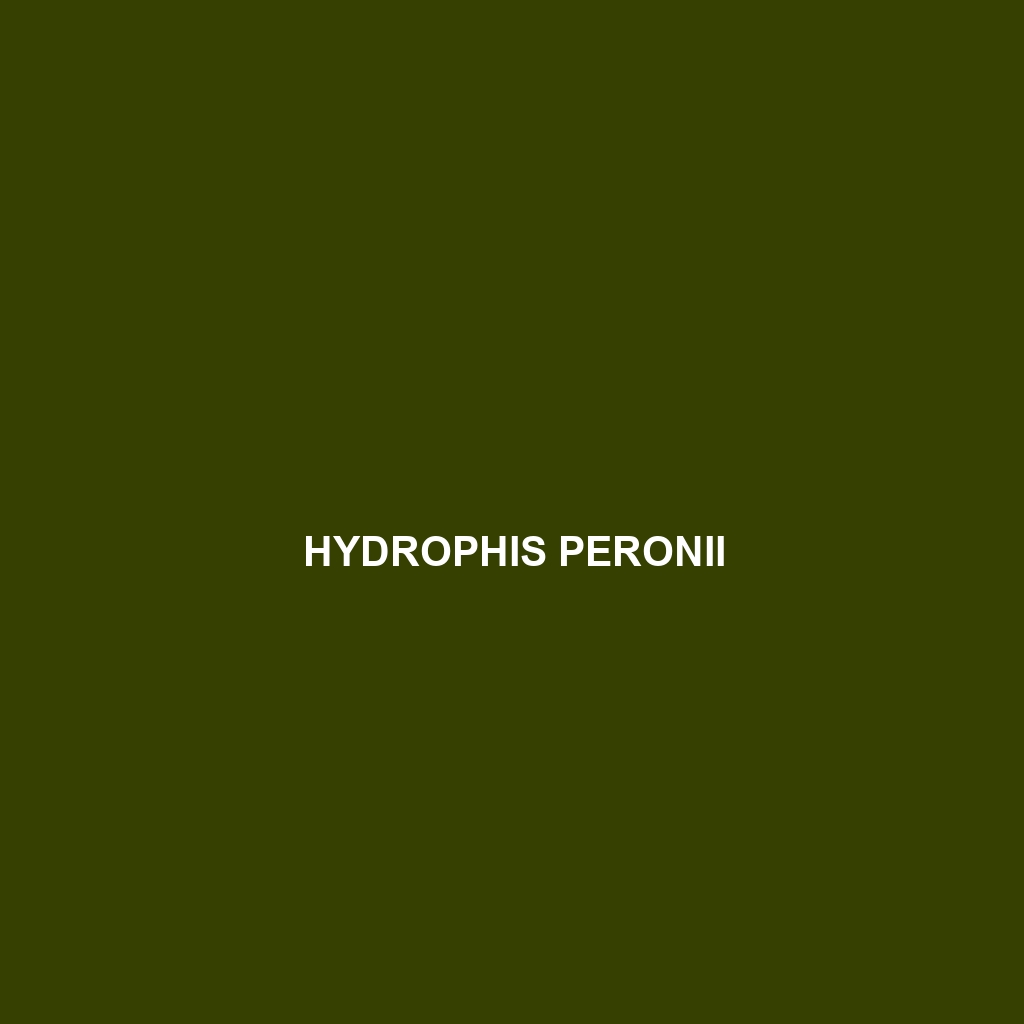Common Name
Hydrophis peronii
Scientific Name
Hydrophis peronii
Habitat
Hydrophis peronii, commonly known as Peron’s sea snake, primarily inhabits shallow coastal waters of the Indo-Pacific region, particularly around Australia, New Guinea, and various islands in the Coral Sea. This species is typically found in marine habitats such as coral reefs, mangroves, and sandy-bottomed coastal areas. Preferring warm tropical and subtropical climates, Hydrophis peronii thrives in temperatures ranging from 20 to 30 degrees Celsius. The snake is often observed in areas with rich aquatic vegetation, which provides shelter and hunting grounds for its prey.
Physical Characteristics
Hydrophis peronii is distinguishable by its elongated, flattened body and paddle-like tail, which enables efficient swimming. Adult individuals generally range from 1.2 to 1.5 meters (4 to 5 feet) in length, though some specimens can grow longer. The coloration of Peron’s sea snake is predominantly bluish-grey to greenish with a lighter, white underside—providing effective camouflage against predators and prey alike. One of its most unique features is the presence of small, isolated scales along its body, which help reduce drag in the water. Additionally, its head is distinctively small with protruding nostrils, adapted for breathing while swimming just below the water surface.
Behavior
Diet
Hydrophis peronii is classified as a carnivore, primarily feeding on small fish and eels. Its diet is supplemented by occasionally consuming crustaceans. This sea snake hunts by grasping and subduing its prey using its strong jaws, injecting venom that quickly immobilizes the animal. Typically, Peron’s sea snake exhibits a pattern of ambush predation, where it remains motionless and waits for unsuspecting prey to swim by, thus maximizing its hunting efficiency.
Reproduction
The reproductive cycle of Hydrophis peronii is fascinating; this species is ovoviviparous, meaning that females give birth to live young rather than laying eggs. Mating occurs from late spring to early summer, with a gestation period lasting about 6 to 8 months. Females can give birth to up to 20 offspring at a time, typically measuring around 30 to 40 centimeters (12 to 16 inches) at birth. Parental care is minimal, as the young are independent and capable of swimming and hunting shortly after birth, ensuring their survival in the competitive marine environment.
Conservation Status
Currently, Hydrophis peronii is listed as a species of “Least Concern” by the International Union for Conservation of Nature (IUCN), with stable populations observed in its native habitat. However, like many marine species, it faces threats from habitat loss due to coastal development, pollution, and climate change, which can impact its marine habitats. Conservation efforts are necessary to monitor populations and protect critical habitats, ensuring the continued health of marine ecosystems where this sea snake resides.
Interesting Facts
Hydrophis peronii exhibits some remarkable adaptations that enhance its survival in marine environments. For instance, it can hold its breath for up to 8 hours while hunting for prey, a trait that distinguishes it from many other sea snakes. Additionally, this species possesses functional lungs that allow it to extract oxygen from water, enabling longer dives. Despite being venomous, it’s rarely harmful to humans, making it an organism of interest for ecological studies and marine tourism.
Role in Ecosystem
As a predator, Hydrophis peronii plays a vital role in its ecosystem, contributing to the balance of marine life in its feeding habitats. By preying on small fish and eels, it helps control the population of these species, sustaining the health of the coral reef ecosystems. Additionally, its presence as a predator can indicate the overall health of marine environments. The intricate interactions with other marine species underscore the importance of preserving habitats to maintain biodiversity and ecosystem functionality.
This HTML-formatted species description provides a comprehensive overview of Hydrophis peronii, ensuring that it is rich with SEO-friendly keywords while remaining informative and engaging for readers.
